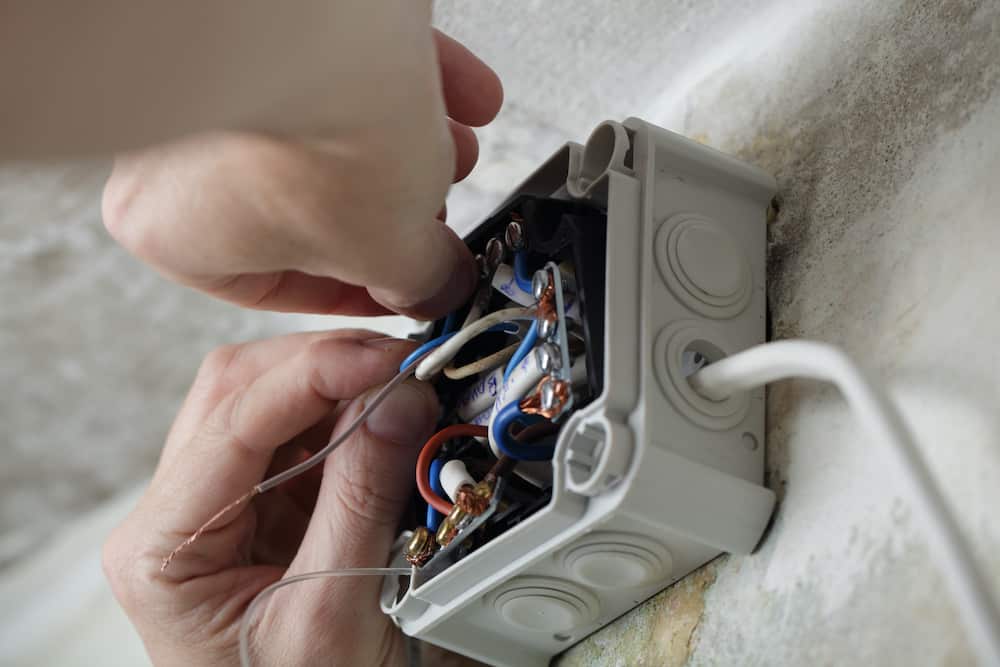n2mb_racing
Active Member
Correct. Not zero, but Effectively zero since the lfp batteries should last almost a million miles.Note this is not strictly true. The impact is less given LFP has higher cycle life, but it's not zero.
You can install our site as a web app on your iOS device by utilizing the Add to Home Screen feature in Safari. Please see this thread for more details on this.
Note: This feature may not be available in some browsers.
Correct. Not zero, but Effectively zero since the lfp batteries should last almost a million miles.Note this is not strictly true. The impact is less given LFP has higher cycle life, but it's not zero.

Apparently the Lightning can power a house, but it's complicated.

Ford's Electric Pickup Can Power Your House In An Outage, But The Cost Could Be Eye-Watering - SlashGear
Ford's F-150 Lightning has a massive battery that can reportedly power an entire house for a significant amount of time.www.slashgear.com

Apparently the Lightning can power a house, but it's complicated.

Ford's Electric Pickup Can Power Your House In An Outage, But The Cost Could Be Eye-Watering - SlashGear
Ford's F-150 Lightning has a massive battery that can reportedly power an entire house for a significant amount of time.www.slashgear.com
Yeah, its funny how quick people were to jump on the whole "its so much cheaper than the powerwall" aspect, without looking at the real costs. These are exaggerated, but even the lowest cost approach will not be cheap.
Now if we can get them to turn down their radios.I hate when I have contractors at my house running a loud generator all day. Or pressure washers. Those things are super annoying
Yeah, I think you are right. If I understand it correct, the onboard inverter is good for ~6kw continuous (I'm assuming the 80% rule applies for continuous loads from the onboard 14-30 outlet). I thought that would be limiting, but I guess the more expensive solution is only ~9.6kw anyway.How so? It's no more expensive than a generator if you use the built-in inverter. You just need to install a transfer switch and plug the 240V outlet into the house.
Standard one is 2.4kW, but comes only with 120V outlets. The 240V come in the 9.6kW option which is $1070, although it is included in the Lariat and Platinum trims.Yeah, I think you are right. If I understand it correct, the onboard inverter is good for ~6kw continuous (I'm assuming the 80% rule applies for continuous loads from the onboard 14-30 outlet). I thought that would be limiting, but I guess the more expensive solution is only ~9.6kw anyway.
If the difference isn't significant, then, yeah, there are cheaper ways to do this.

I'm pretty sure that if you don't pay for the extra hardware for "Intelligent Backup Power capability", you'd be pulling a max of 6k off the 14-30R for backup power.Standard one is 2.4kW, but comes only with 120V outlets. The 240V come in the 9.6kW option which is $1070, although it is included in the Lariat and Platinum trims.

Ford F-150 Lightning: Everything You Need To Know Before Ordering
This week, Ford is opening the order bank for the all-new F-150 Lightning electric pickup and, since the configurator is online, let's take a look into the details.www.google.com
That is pretty cool that Tesla mobile service uses it.Not sure what risk you are concerned about but the DC-DC converter is designed to provide power safely without damage to the car. Tesla mobile service uses it for their power tools. I have used it with proper settings for provide 1000W+ for hours with any issue.
Just jumping into this discussion ... I'm current owner of a Nissan Leaf and soon-to-be owner of a MYLR.I doubt that can handle fridge compressor surge power.
Most people don't use their real names on forums such as these. Unless Tesla is actually able to strong-arm sites into providing folks' real email address and correlating from there.Tesla has been watching social media sites for a long time, just like every other company does. According to your quote, they voided the warranty on his 12 volt battery (which is a roughly 80 dollar part) while your header makes it sound like they voided his entire car warranty, or his high voltage battery warranty.
Most people don't use their real names on forums such as these. Unless Tesla is actually able to strong-arm sites into providing folks' real email address and correlating from there.
It looks the same as Model 3 based on the videos I have seen. Check out the Munro teardown videos.My question is: is the model Y the same as the model 3 in terms of having 14 volt studs under the passenger seat? Or is there another thread for that?
Glad to see you have a working setup. However, just FYI, the post you quoted was referring to a much smaller inverter (~100W).Just jumping into this discussion ... I'm current owner of a Nissan Leaf and soon-to-be owner of a MYLR.
I've been doing this just fine with the Leaf. Built a replacement battery holder, which contains a 150 amp fuse and an Anderson connector for the 12vdc. This connects to a 1000watt pure-sinewave inverter. I also installed a generator inlet connected to my main load center, and a mechanical interlock that only allows the generator inlet to be connected when the main breaker is turned off (this is not allowed in some jurisdictions, because it fails to work if the front panel of the load center is removed).
Unfortunately these small inverters produce only 120vac (not 240vac). So I made a cord that connects the hot signal from the inverter to BOTH hot pins on the generator inlet. This means I can power my 120vac loads, but my 240vac loads will see zero volts; this is fine, because there's not enough power for 240vac loads anyhow. What is NOT fine is if your house has any multi-wire branch circuits (MWBC), because two 120vac outlets that are sharing a neutral are supposed to be out of phase, but they're not, potentially overloading the neutral wire. Fortunately I don't have any MWBCs. Interestingly, and fortunately, our dual-fuel range (gas cooktop + electric oven) has a neutral wire, so even though the oven doesn't work, the control circuitry still gets 120vac, which allows gas to flow so we can use the cooktop.
Anyhow, I'm here because these comments about fridges piqued my interest. Because my system can easily power the fridge, and even when the fridge goes through cycling of the compressor there are no problems (it is a 2016 vintage KitchenAId unit). But occasionally it gets into a mode where the inverter cannot even handle the fridge alone - the inverter instantly overloads and shuts off. I can only conclude that this is because the fridge has entered an auto-defrost cycle. I've been pondering how to temporarily disable auto-defrost when running in backup mode. The best I can come up with is to install a normally-closed relay in the wire to the defrost heater (on the evaporator) and have the coil inputs coming out to where I can connect a battery when I need to disable defrost. I think this would probably work well; but I haven't implemented it yet, because the evaporator is at the back of the freezer compartment (it's a French-door style) and a PITA to access.
Anyhow, other than bragging on my system, I wanted to make people aware of this potential hiccup with powering a fridge with small inverter.
Sure, and I'm sure that for a 100W inverter, the compressor startup would almost certainly overload the thing. I was mainly trying to make the point that it appears auto-defrost is a bigger problem than compressor startup. In particular, I'm thinking that for the Tesla, these "jacketed" batteries (such as Jackery) are the way to go for me. So I'm wondering if the people here that are using these have had any trouble with auto-defrost when running fridges off them.Glad to see you have a working setup. However, just FYI, the post you quoted was referring to a much smaller inverter (~100W).
Good point. I use real name of Facebook too. Wish I hadn't. My stepsons are younger and wiser.The article in question stated the person had posted the information on a facebook group page / their facebook page, where it is likely they used real information.
Just jumping into this discussion ... I'm current owner of a Nissan Leaf and soon-to-be owner of a MYLR.
I've been doing this just fine with the Leaf. Built a replacement battery holder, which contains a 150 amp fuse and an Anderson connector for the 12vdc. This connects to a 1000watt pure-sinewave inverter. I also installed a generator inlet connected to my main load center, and a mechanical interlock that only allows the generator inlet to be connected when the main breaker is turned off (this is not allowed in some jurisdictions, because it fails to work if the front panel of the load center is removed).
Unfortunately these small inverters produce only 120vac (not 240vac). So I made a cord that connects the hot signal from the inverter to BOTH hot pins on the generator inlet. This means I can power my 120vac loads, but my 240vac loads will see zero volts; this is fine, because there's not enough power for 240vac loads anyhow. What is NOT fine is if your house has any multi-wire branch circuits (MWBC), because two 120vac outlets that are sharing a neutral are supposed to be out of phase, but they're not, potentially overloading the neutral wire. Fortunately I don't have any MWBCs. Interestingly, and fortunately, our dual-fuel range (gas cooktop + electric oven) has a neutral wire, so even though the oven doesn't work, the control circuitry still gets 120vac, which allows gas to flow so we can use the cooktop.
Anyhow, I'm here because these comments about fridges piqued my interest. Because my system can easily power the fridge, and even when the fridge goes through cycling of the compressor there are no problems (it is a 2016 vintage KitchenAId unit). But occasionally it gets into a mode where the inverter cannot even handle the fridge alone - the inverter instantly overloads and shuts off. I can only conclude that this is because the fridge has entered an auto-defrost cycle. I've been pondering how to temporarily disable auto-defrost when running in backup mode. The best I can come up with is to install a normally-closed relay in the wire to the defrost heater (on the evaporator) and have the coil inputs coming out to where I can connect a battery when I need to disable defrost. I think this would probably work well; but I haven't implemented it yet, because the evaporator is at the back of the freezer compartment (it's a French-door style) and a PITA to access.
Anyhow, other than bragging on my system, I wanted to make people aware of this potential hiccup with powering a fridge with small inverter.


